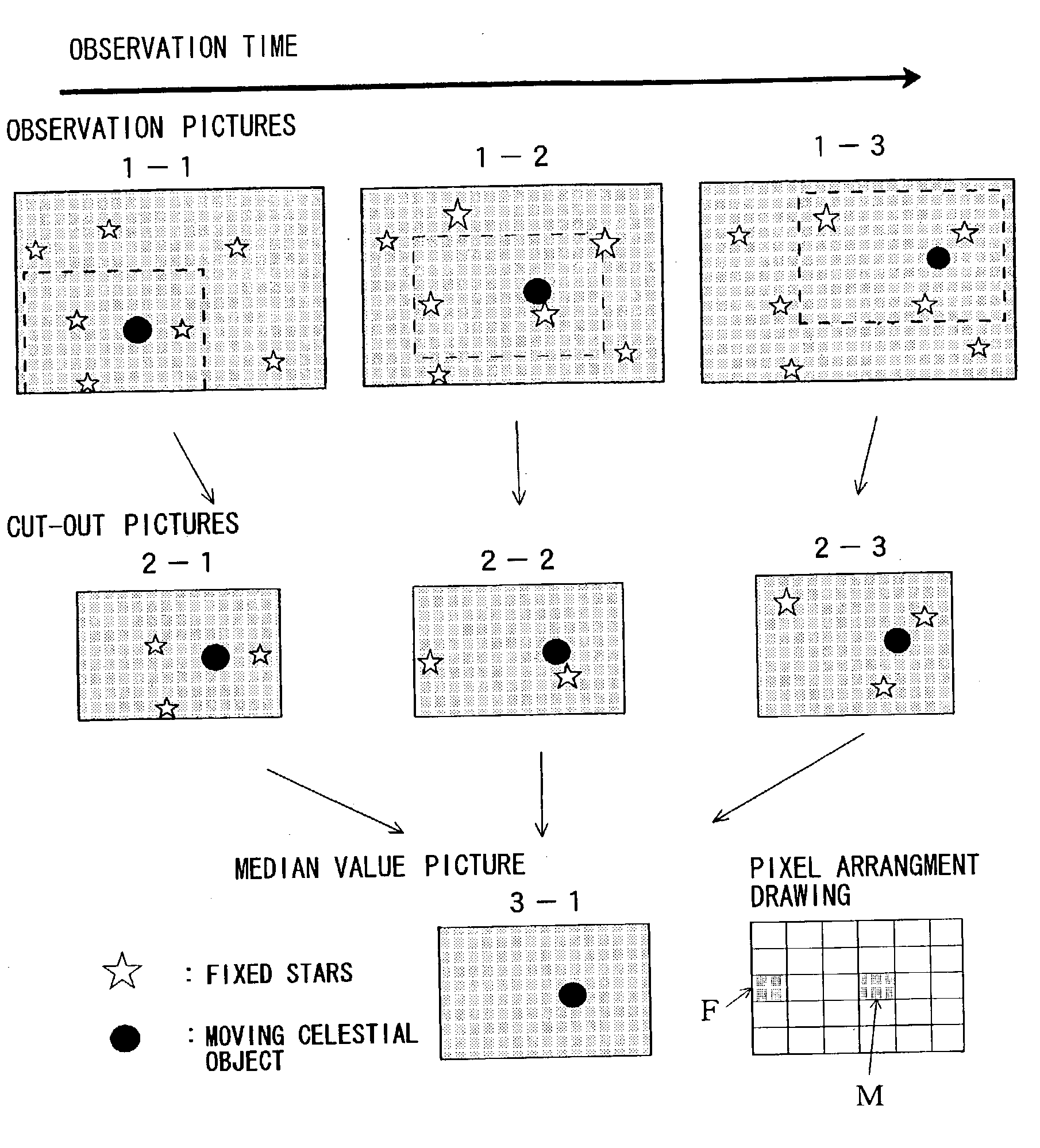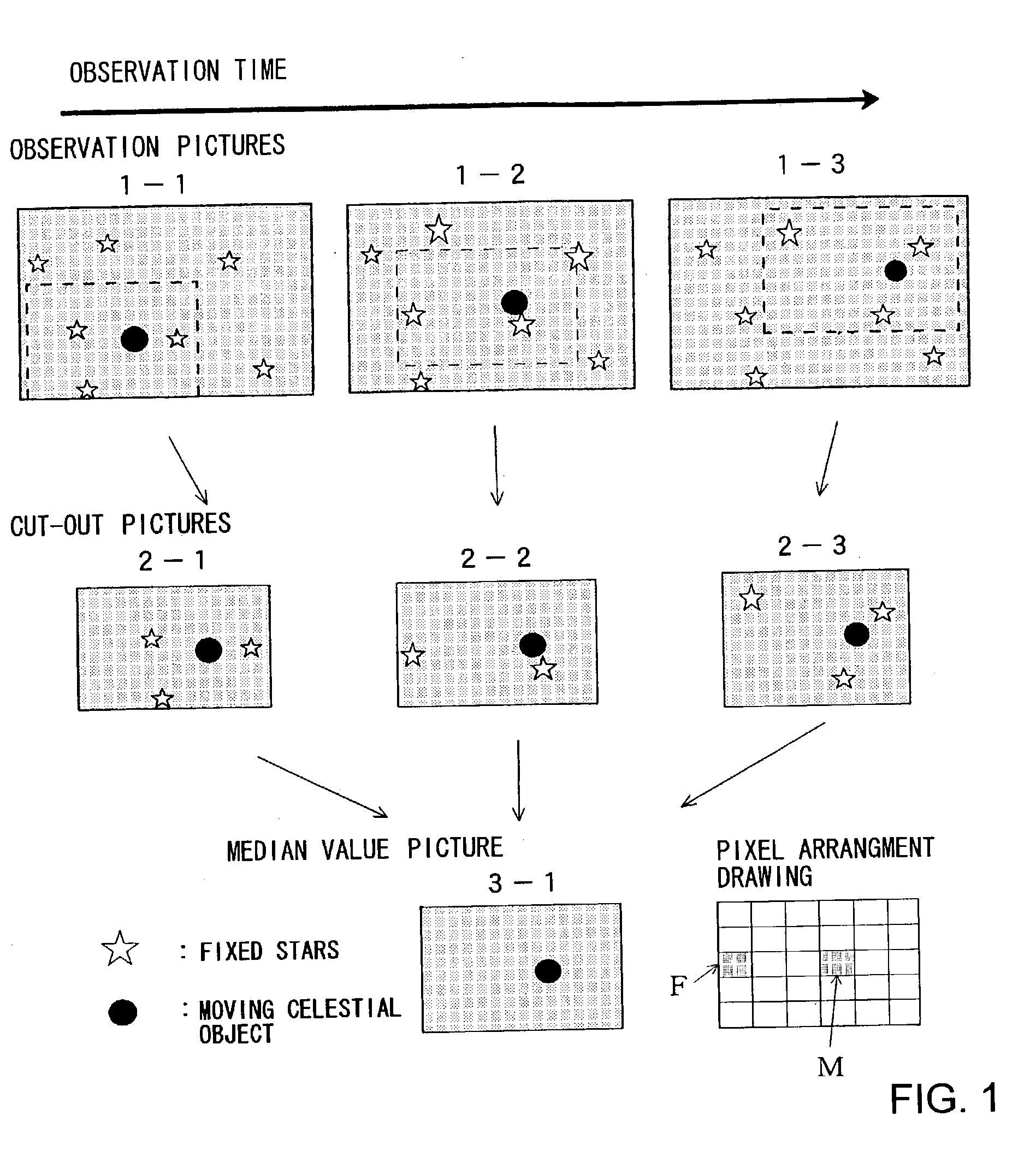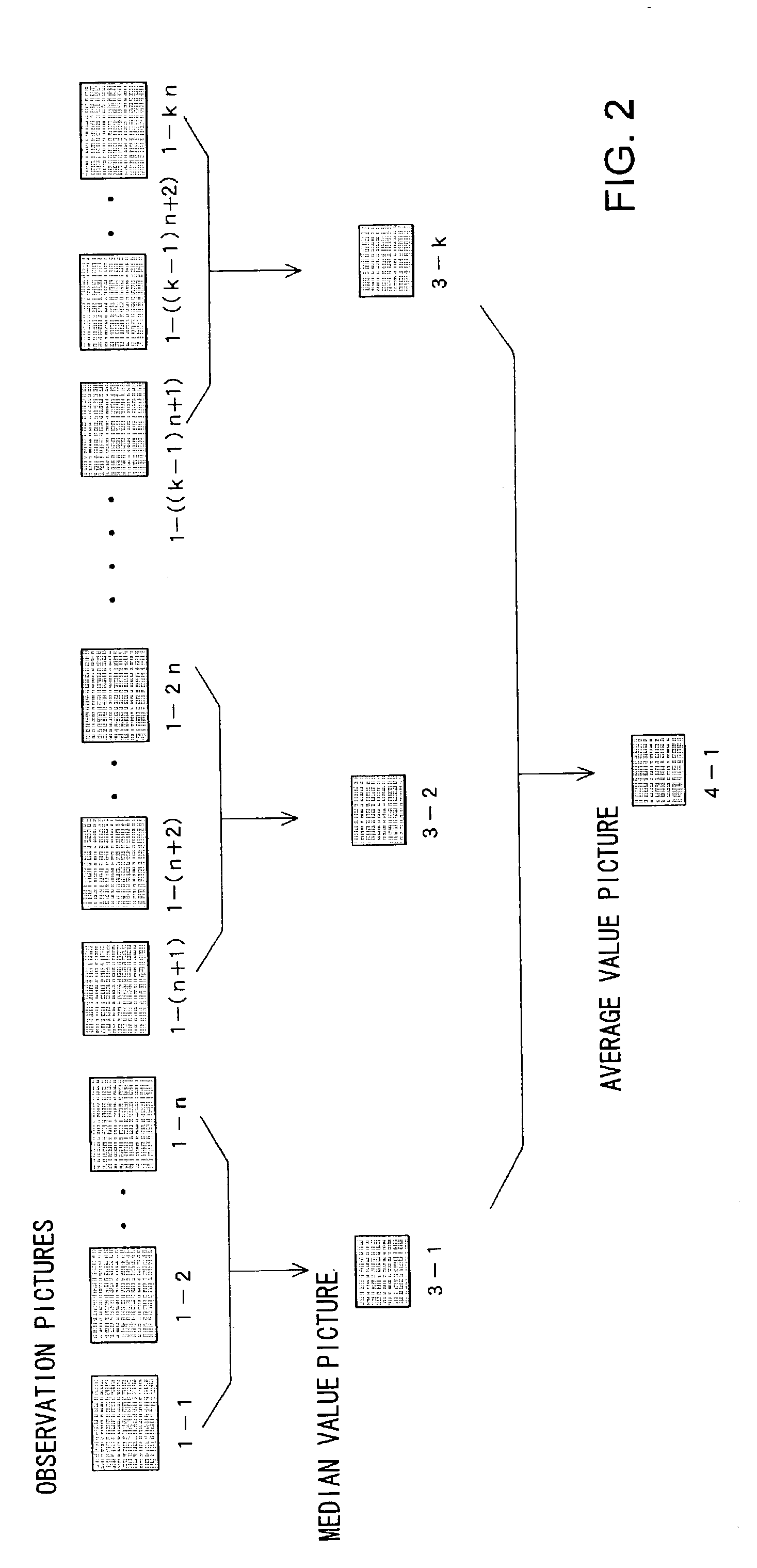Moving object detection method
- Summary
- Abstract
- Description
- Claims
- Application Information
AI Technical Summary
Benefits of technology
Problems solved by technology
Method used
Image
Examples
Embodiment Construction
[0058] FIG. 5 is a drawing showing an example of the picture obtained using the moving celestial object detection method pertaining to the present invention.
[0059] In order to detect a satellite or piece of debris having a geosynchronous orbit, a CCD camera having a 3 cm.times.3 cm image area was mounted to a wide-angle telescope having a diameter of 50 cm and an F-value of 2.0, and the geosynchronous orbital region was continuously captured in thirty pictures in fixed star pursuit mode with an exposure time of 2 seconds and an exposure interval of 13 seconds. In fixed star pursuit mode, the movement of a celestial object in a geosynchronous orbit consists of eastward movement of approximately 15" per second. As a result, a region corresponding to this movement was cut out from each picture, and first, three median value pictures were created from 10 pictures each, and an average value picture was created from these three median value pictures.
[0060] FIG. 5-A is a picture cut out fr...
PUM
 Login to View More
Login to View More Abstract
Description
Claims
Application Information
 Login to View More
Login to View More - R&D
- Intellectual Property
- Life Sciences
- Materials
- Tech Scout
- Unparalleled Data Quality
- Higher Quality Content
- 60% Fewer Hallucinations
Browse by: Latest US Patents, China's latest patents, Technical Efficacy Thesaurus, Application Domain, Technology Topic, Popular Technical Reports.
© 2025 PatSnap. All rights reserved.Legal|Privacy policy|Modern Slavery Act Transparency Statement|Sitemap|About US| Contact US: help@patsnap.com



